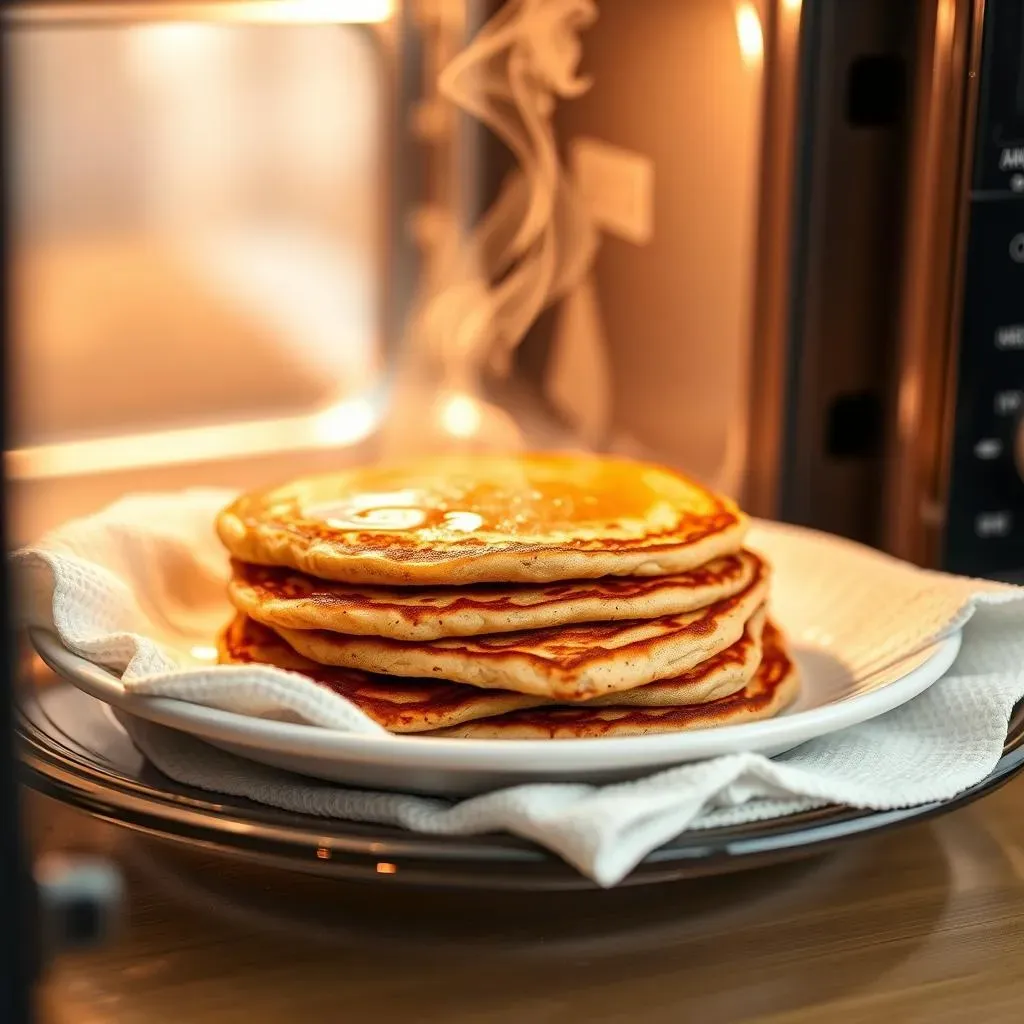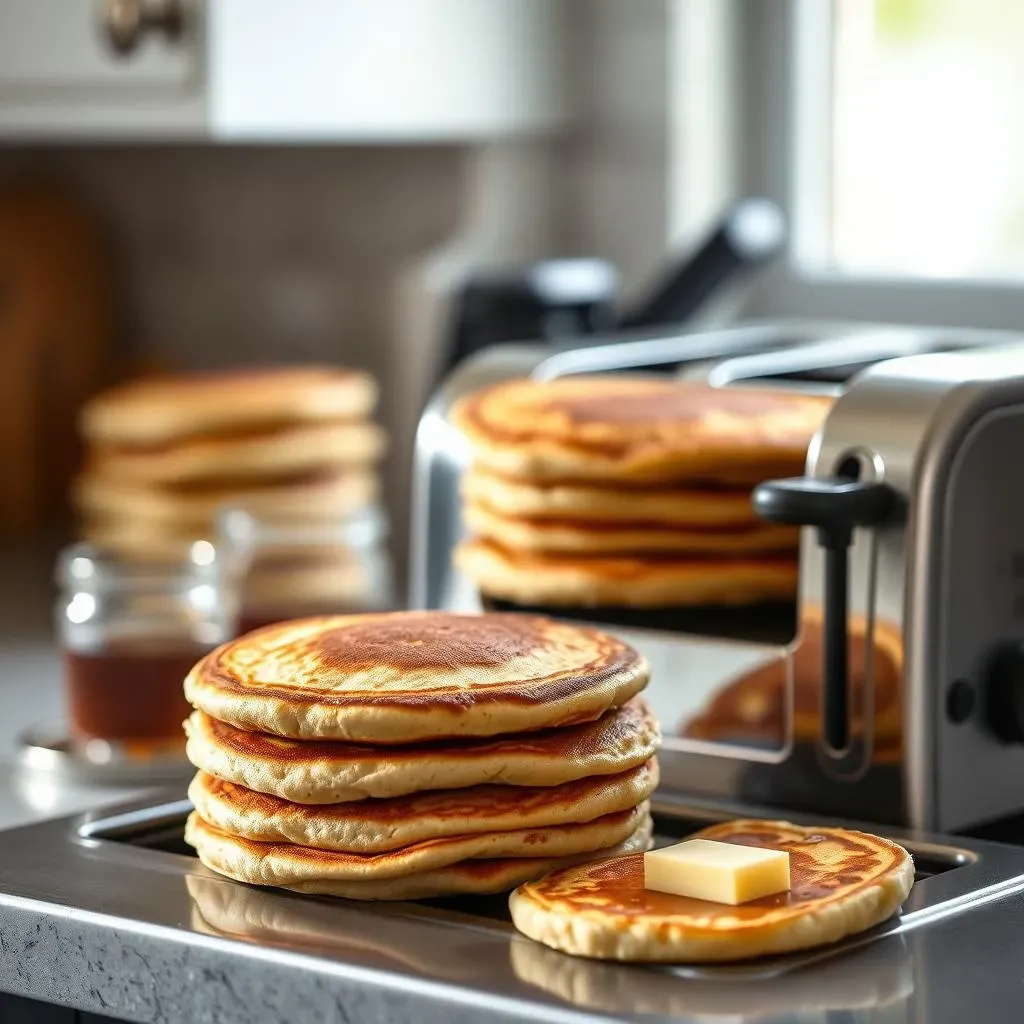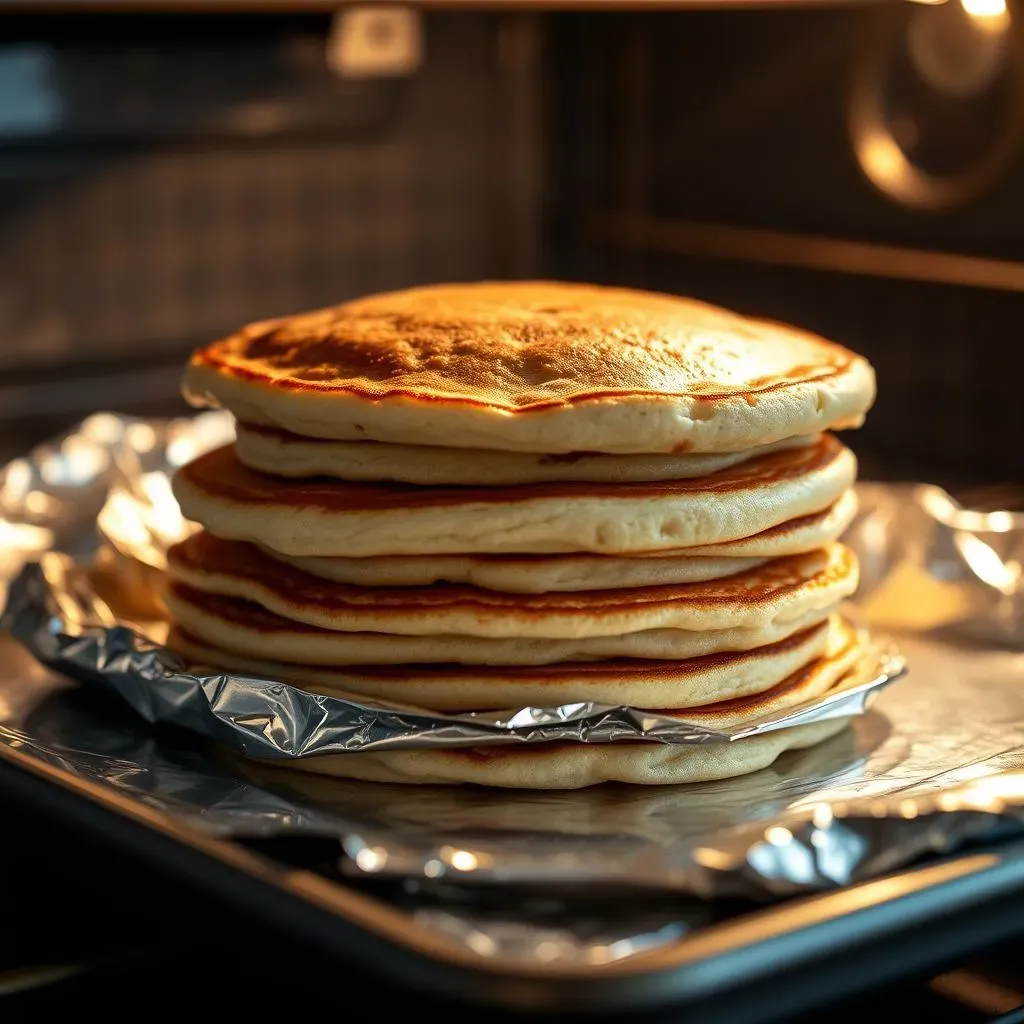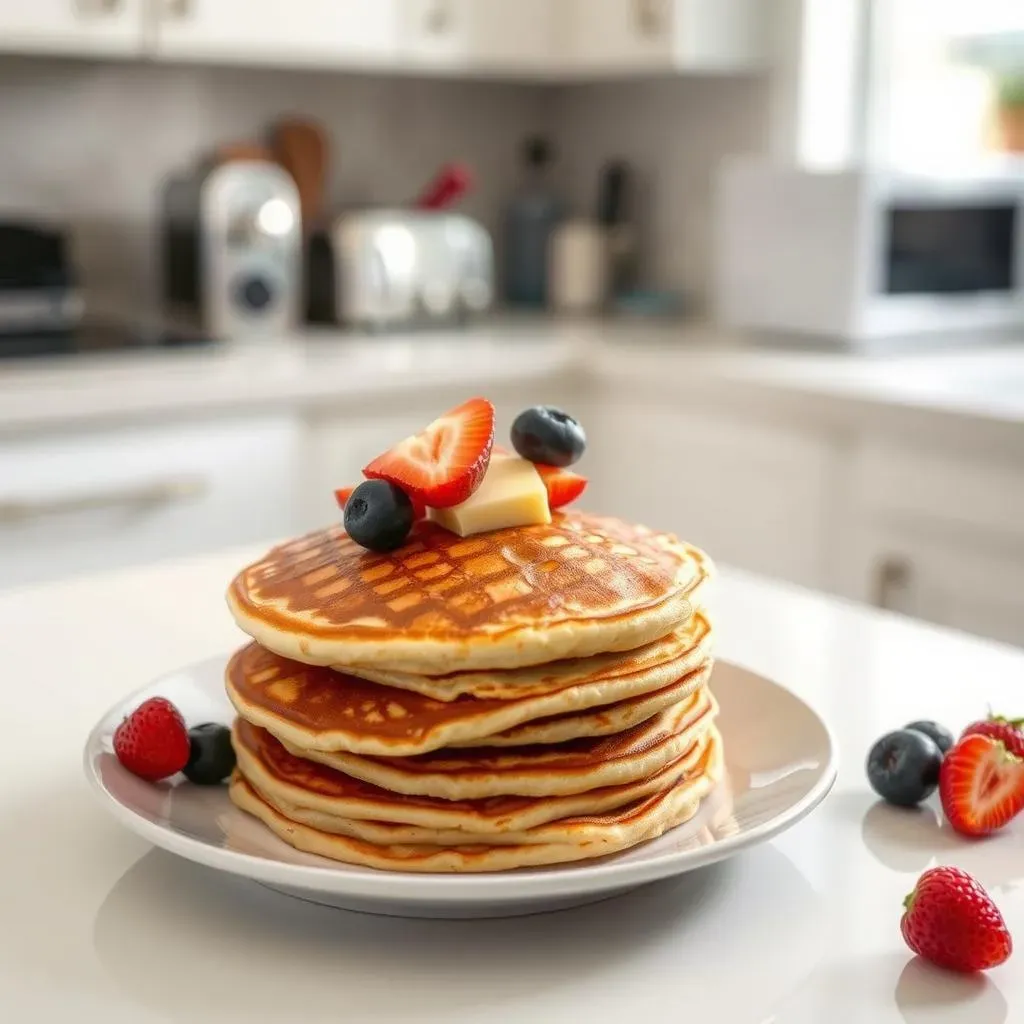Table of Contents
Let's face it: protein pancakes are amazing. But what happens when you've made a delicious stack and there are leftovers? Do you just sadly watch them get cold and sad in the fridge? Absolutely not! This article is your ultimate guide to reheating protein pancakes, ensuring they’re just as fluffy and delicious the second (or third!) time around. We’ll explore three popular methods: the quick and easy microwave, the classic toaster technique, and the slightly more involved oven method. We'll cover everything from timing and temperature to troubleshooting common issues like dry or rubbery pancakes. By the end, you'll be a reheating protein pancake pro, transforming those leftovers into a delightful treat. Get ready to master the art of reheating protein pancakes and say goodbye to wasted deliciousness! So, let's dive in and discover the secrets to perfectly reheated protein pancakes!
Microwave Mayhem: Reheating Protein Pancakes in the Microwave

Microwave Mayhem: Reheating Protein Pancakes in the Microwave
Quick & Easy Reheating
The microwave is your go-to for speed. Grab a microwave-safe plate, pop your protein pancake(s) on, and cover with a damp paper towel. This prevents them from drying out, a common protein pancake pitfall. Think of the paper towel as a tiny, personal humidity tent for your pancake. Microwave on low power (around 30-50%) in short bursts (15-30 seconds), checking frequently. You want to gently warm the pancake through, not nuke it into oblivion. Overdoing it will lead to a rubbery texture, and nobody wants that. For a single pancake, 20-30 seconds is usually enough; for multiple pancakes, you might need to add 15-second intervals until heated through. Remember, patience is key!
If you're feeling adventurous and want to add a little extra moisture, spritz your pancake with a little water before microwaving. This is especially helpful for those slightly drier protein pancakes. Don't overdo the water, though—a light mist is all you need. Check out our guide on avoiding dry protein pancakes for some extra tips on making perfect pancakes from the start.
Number of Pancakes | Microwave Power (%) | Initial Time (seconds) |
|---|---|---|
1 | 30-50 | 15-20 |
2-3 | 30-50 | 30-45 |
Avoiding Microwave Mishaps
Microwaving protein pancakes can be tricky. The biggest issue is uneven heating. The edges might get hot and crispy while the center stays cold and doughy. To combat this, try rotating your pancake halfway through the reheating process. This helps ensure even cooking. Also, remember that protein pancakes often contain ingredients that can react differently to microwaves than regular pancakes. If you're using a protein powder blend with lots of added ingredients, it might take a bit more experimentation to find the perfect reheating time and power level. Consider the different protein pancake mixes and how they might respond differently.
Another common problem is over-microwaving. This results in a tough, rubbery pancake—definitely not ideal. It's always better to err on the side of caution and under-microwave than to overcook. You can always add a few more seconds, but you can't take away the rubberiness once it sets in. Plus, nobody likes a soggy pancake! Check out our article on making perfect protein pancakes for some additional advice.
- Use a damp paper towel to retain moisture.
- Microwave in short bursts on low power.
- Rotate the pancake halfway through.
- Don't over-microwave!
Toaster Triumph: The Toaster Method for Perfect Reheated Pancakes

Toaster Triumph: The Toaster Method for Perfect Reheated Pancakes
Toasty Goodness
For a single or a couple of pancakes, the toaster is your new best friend. It's quick, easy, and delivers that satisfyingly crisp exterior we all crave. Simply pop your protein pancake into the toaster slot (one per slot, please!), making sure it's not too thick, or it might not toast evenly. Set your toaster to a medium setting; you want a nice warm-through, not a charcoal briquette. Aim for a toast level that's slightly less than you'd use for regular bread. Protein pancakes can be a bit denser, so they need a little less aggressive toasting.
Keep a close eye on things; toasters can be fickle beasts. Depending on your toaster and the thickness of your pancakes, you might need to adjust the toasting time. Start with a shorter time and check frequently. If you're unsure, err on the side of under-toasting; you can always pop it back in for a few more seconds. For extra-fluffy pancakes, consider our fluffy protein pancake recipe for consistently great results.
- Use a medium toast setting.
- Toast one or two pancakes at a time.
- Check frequently to avoid burning.
- Adjust toasting time as needed.
One thing to note: If your protein pancakes are particularly dense or have a lot of added ingredients (like nuts or seeds), they might need a bit longer to toast through. Experiment to find the perfect timing for your favorite recipe. Remember, different protein pancake mixes behave differently. A comparison of protein pancake mixes could help you understand this better.
A slightly browned exterior is your goal here. You want a warm, slightly crispy pancake, not a crunchy hockey puck. The inside should be heated through and soft, not cold or gummy. If you find your pancakes are burning before the inside is warm, try lowering your toast setting or using a lower-wattage toaster. For extra tips on making pancakes that toast beautifully, check out our guide on making perfect protein pancakes.
Pancake Type | Recommended Toast Setting | Approximate Toasting Time (seconds) |
|---|---|---|
Thin, standard protein pancake | Medium | 60-90 |
Thick, dense protein pancake | Medium-Low | 90-120 |
Oven Ovation: Baking Your Leftovers to Perfection

Oven Ovation: Baking Your Leftovers to Perfection
The Oven's Gentle Embrace
For a larger batch of protein pancakes, or if you want that extra-fluffy texture, the oven is your best bet. Preheat your oven to a low temperature, around 300°F (150°C). This gentle heat will warm the pancakes through without drying them out. Wrap your pancakes individually in foil to trap moisture and prevent them from becoming crispy. Think of it as a tiny, warm hug for your pancakes. Place the foil-wrapped pancakes on a baking sheet and bake for 10-15 minutes, or until heated through. Check them after 10 minutes; every oven is different, and you don't want to overbake them!
This method is great for reheating several pancakes at once. It’s also fantastic for those who prefer a softer, less crispy texture. If you're looking for extra-fluffy pancakes, check out our recipe for fluffy protein pancakes – they reheat beautifully in the oven!
Number of Pancakes | Oven Temperature (°F) | Baking Time (minutes) |
|---|---|---|
2-4 | 300 | 10-12 |
5-8 | 300 | 12-15 |
Avoiding Oven Overkill
The biggest risk with oven reheating is overbaking. Overbaked protein pancakes can be dry, hard, and generally unpleasant. To avoid this, make sure you use a low temperature and don't bake them for too long. It's always better to slightly underbake and check frequently. You can always add a couple of minutes, but you can't undo overbaking. Remember, we're aiming for warm and fluffy, not crunchy and dry! For more tips on achieving the perfect texture, explore our guide on making perfect protein pancakes.
Another thing to consider is the type of protein pancake you're reheating. Some mixes are denser than others, and this can affect how long they need to bake. If your pancakes are particularly dense, you may need to increase the baking time slightly. However, it's still crucial to monitor them closely to prevent them from drying out. If you're experimenting with different recipes, understanding the differences between protein pancake mixes can make a big difference.
- Wrap pancakes individually in foil.
- Use a low oven temperature (300°F/150°C).
- Check frequently to prevent overbaking.
- Adjust baking time based on pancake density.
Troubleshooting Tips: Fixing Common Reheating Problems

Troubleshooting Tips: Fixing Common Reheating Problems
Dry Pancakes? Don't Despair!
So, you've reheated your protein pancakes, and they're a little…dry. Don't fret! This is a common issue, especially with protein pancakes, which can sometimes be drier than their regular counterparts. The key is adding moisture back in. Next time, try covering your pancakes with a damp paper towel before microwaving or toasting. You can also spritz them with a little water before reheating. For the oven method, make sure you're wrapping each pancake tightly in foil to trap the steam.
If your pancakes are already dry, you can try adding a little bit of milk or water to the plate before microwaving them. Just be careful not to add too much, or you'll end up with soggy pancakes. A teaspoon or two should be enough. If you're baking them in the oven, you can try placing a small dish of water in the oven with the pancakes to create a more humid environment. This helps to keep them moist. For future reference, check out our tips on making perfect protein pancakes to avoid dryness from the start!
- Use a damp paper towel during reheating.
- Spritz with water before reheating.
- Add a tiny bit of milk or water to the plate (microwave).
- Use a small dish of water in the oven (oven method).
Rubberized Pancakes? Time for a Rethink!
Nobody wants rubbery pancakes! This usually happens when you over-reheat them. Microwaves are notorious for uneven heating, leading to some parts becoming overcooked while others remain undercooked. The solution? Lower your microwave power and use shorter bursts, checking frequently. Rotate your pancakes halfway through to ensure even cooking. For toasting, use a lower setting and check regularly. For oven reheating, use a lower temperature and check often. Remember, it's always better to under-reheat and add more time than to over-reheat and end up with rubbery pancakes.
If you're using a very dense protein pancake mix, it might take longer to reheat evenly. Consider using a lower power setting or longer heating times. Experiment to find what works best for your particular recipe. You might also want to check out our comparison of protein pancake mixes to find one that reheats better. And, of course, always remember to check your pancakes regularly to prevent overcooking. Remember, patience is key to perfectly reheated pancakes!
Reheating Method | Troubleshooting Tip |
|---|---|
Microwave | Lower power, shorter bursts, rotate |
Toaster | Lower setting, check frequently |
Oven | Lower temperature, check frequently |